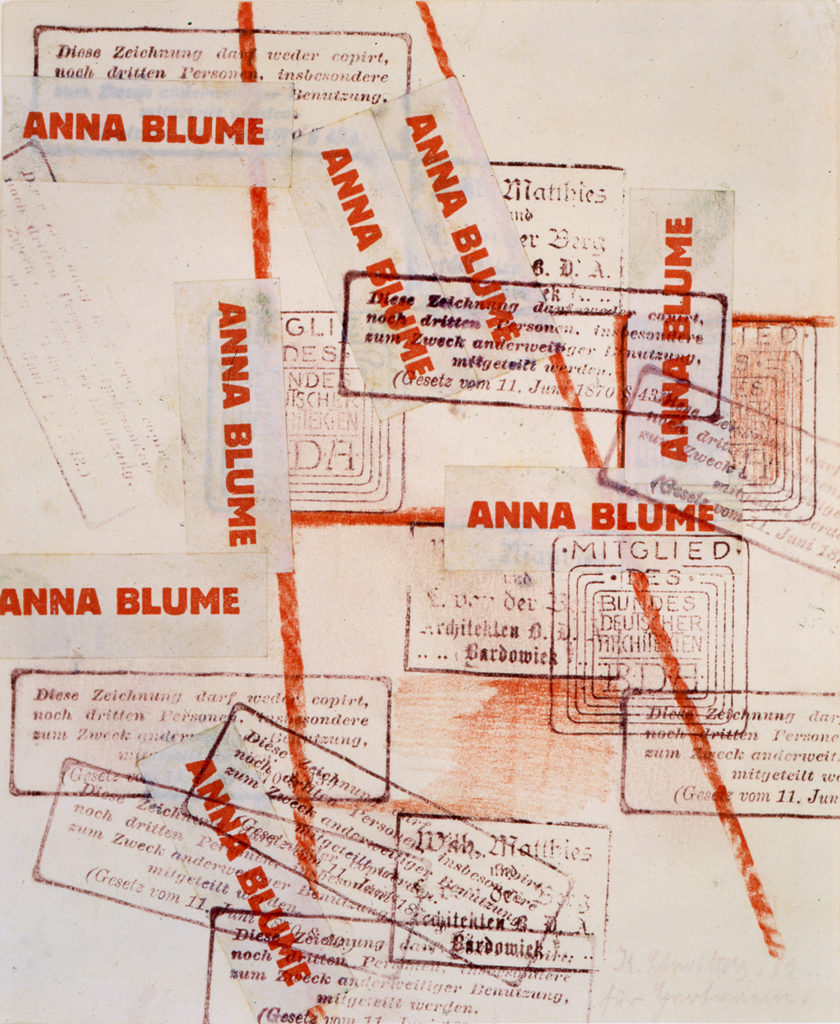Für Hartmann

Towards the end of the 1910s Kurt Schwitters (1887-1948) began creating pictures out of random materials and objects that he found in his close surroundings.
Things that had been discarded, ruined or lost, and considered by most to be scrap or rubbish. It might be pieces of fabric, torn newspaper fragments or tram tickets. Or it might be larger objects, such as pieces of wooden planks, wire, cartons or chain remnants. These works are referred to as collages or assemblages.
The collage Für Hartmann has a classic, subdued and geometric style characteristic of Schwitter’s works from the early 20s. He has attached bits of paper in a crisscross pattern on which the name “Anna Blume” appears in bold type. The pictorial space is covered with various mechanically applied stamps and a bold letter “A” drawn in bright red crayon. The direct reference to Anna Blume adds an element of intrigue to the picture, as it was the title of a poem that Schwitters wrote in 1919. The poem was a parody of the love poem and has remained standing as a symbol of the chaos and unpredictability that characterised the period, in addition to heralding a new poetic language.
OWG